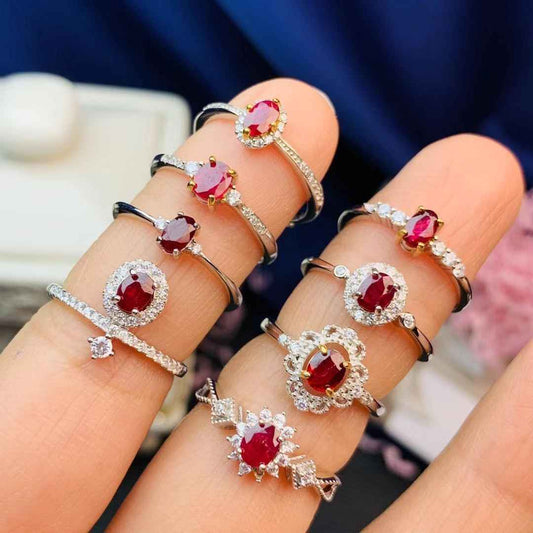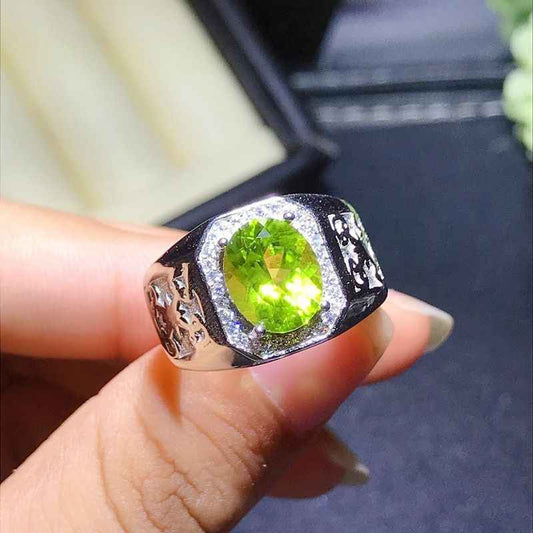Moissanite vs. Diamond: What’s the Difference?
Share

When shopping for an engagement ring or any other fine jewelry, the choice between moissanite and diamond is a common consideration. Both stones are beautiful and durable, making them popular choices, but they differ in several key ways. In this blog, we’ll explore the differences between moissanite and diamonds in terms of composition, appearance, durability, price, and ethical considerations to help you make an informed decision.
1. Composition and Origin
-
Moissanite:
- Origin: Moissanite is a gemstone composed of silicon carbide. It was first discovered in a meteor crater by French scientist Henri Moissan in 1893, and natural moissanite is extremely rare. Today, moissanite is almost always lab-created, making it a sustainable and ethical choice.
- Composition: Silicon carbide, a material known for its hardness and brilliance.
-
Diamond:
- Origin: Diamonds are formed under extreme pressure and temperature conditions in the Earth’s mantle and brought to the surface through volcanic activity. Diamonds are composed of pure carbon, arranged in a crystalline structure.
- Composition: Carbon, which makes diamonds the hardest natural material known.
2. Appearance
-
Moissanite:
- Brilliance: Moissanite is known for its intense sparkle, which is different from a diamond’s brilliance. It has a higher refractive index (2.65 – 2.69) than diamonds, which means it disperses more light, resulting in a rainbow-like effect.
- Color: Moissanite is typically colorless or near-colorless, but some stones may exhibit a slight yellow or greenish tint in certain lighting.
- Fire: Moissanite exhibits more fire (colorful flashes of light) than diamonds, which some people love, while others may find it too much.
-
Diamond:
- Brilliance: Diamonds have a refractive index of 2.42, giving them a classic brilliance and sparkle that is highly prized in jewelry. The brilliance of a diamond is more white light, compared to the rainbow effect in moissanite.
- Color: Diamonds come in a range of colors, from colorless to light yellow or brown, with colorless diamonds being the most valuable.
- Fire: Diamonds have fire, but it is generally less intense than moissanite, contributing to their more subtle sparkle.
3. Durability
-
Moissanite:
- Hardness: Moissanite ranks 9.25 on the Mohs scale of hardness, making it one of the hardest gemstones, second only to diamonds.
- Toughness: It is highly durable and resistant to scratching, chipping, and breaking, making it suitable for daily wear.
-
Diamond:
- Hardness: Diamonds rank 10 on the Mohs scale, making them the hardest natural material. This extreme hardness gives diamonds unmatched durability.
- Toughness: Diamonds are incredibly durable, with excellent resistance to scratching and chipping, making them ideal for engagement rings and other jewelry that is worn daily.
4. Price
-
Moissanite:
- Cost: Moissanite is significantly less expensive than diamonds. The price of moissanite is generally based on size and quality but is much more affordable than diamonds of comparable size.
- Value: For those looking for a budget-friendly alternative to diamonds, moissanite offers excellent value, especially considering its brilliance and durability.
-
Diamond:
- Cost: Diamonds are typically much more expensive than moissanite. The price of a diamond is influenced by the 4 Cs: Carat, Cut, Color, and Clarity, with larger, higher-quality diamonds commanding the highest prices.
- Value: Diamonds are considered a luxury item and are often seen as a symbol of enduring love and commitment, contributing to their high value.
5. Ethical Considerations
-
Moissanite:
- Sustainability: Since moissanite is lab-created, it has a smaller environmental impact compared to mined diamonds. It is an ethical choice for those concerned about the environmental and social issues associated with diamond mining.
- Conflict-Free: Moissanite is guaranteed conflict-free because it is not mined.
-
Diamond:
- Sustainability: The diamond mining industry has a significant environmental impact, though some companies have adopted more sustainable practices. Lab-grown diamonds are also an ethical alternative.
- Conflict-Free: While many diamonds are certified as conflict-free, ensuring this requires careful sourcing and certification, as the diamond trade has been linked to conflicts in some regions.
6. Which Should You Choose?
The choice between moissanite and diamond depends on personal preference, budget, and values. If you prioritize brilliance, affordability, and ethical sourcing, moissanite may be the perfect choice for you. If you value tradition, luxury, and the unmatched hardness of a diamond, then a diamond might be worth the investment.
Both moissanite and diamonds offer beauty, durability, and a range of options to suit different styles and budgets. Whether you choose moissanite or a diamond, either can be a stunning symbol of your love and commitment.
Conclusion
Moissanite and diamonds are both excellent choices for jewelry, each with its unique properties and benefits. By understanding the differences in appearance, durability, price, and ethical considerations, you can make an informed decision that aligns with your personal style and values. Whether you choose the brilliance of moissanite or the timeless elegance of a diamond, your chosen gemstone will undoubtedly hold a special place in your heart and jewelry collection.





